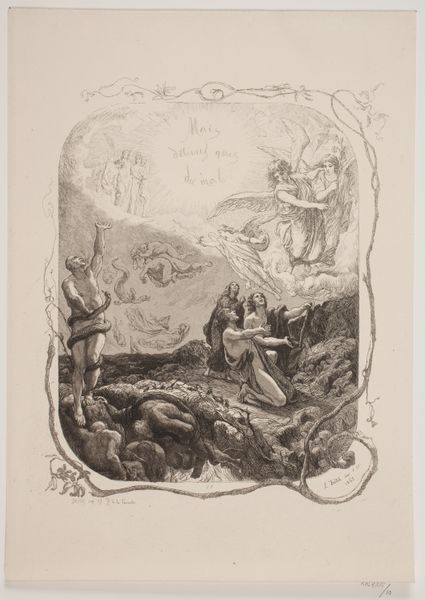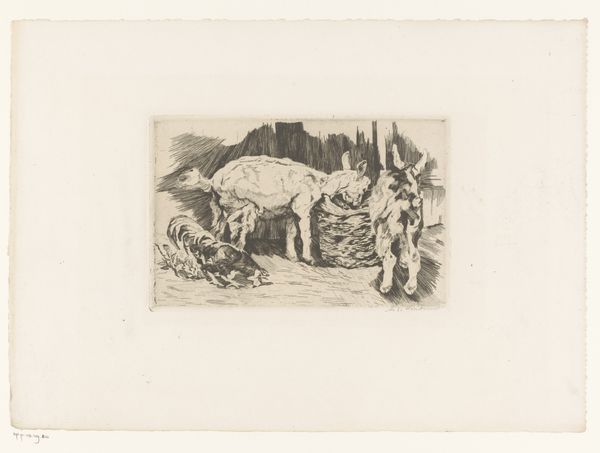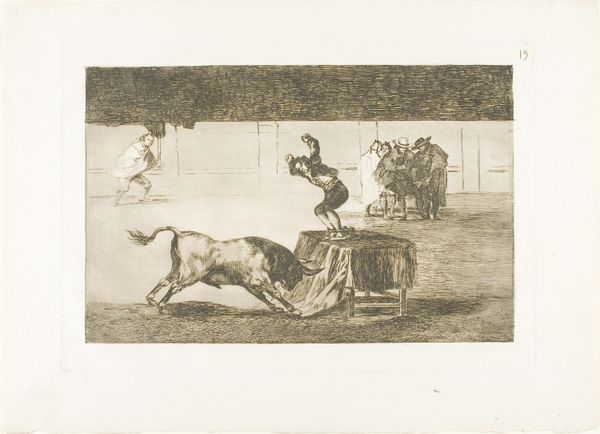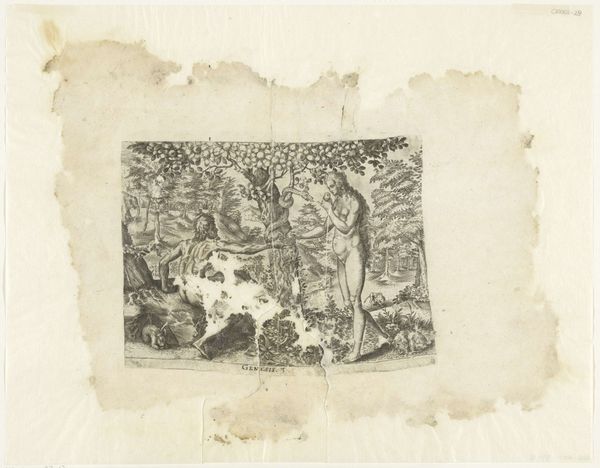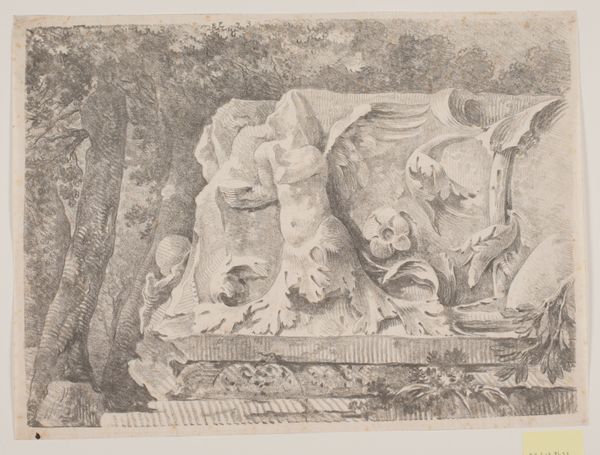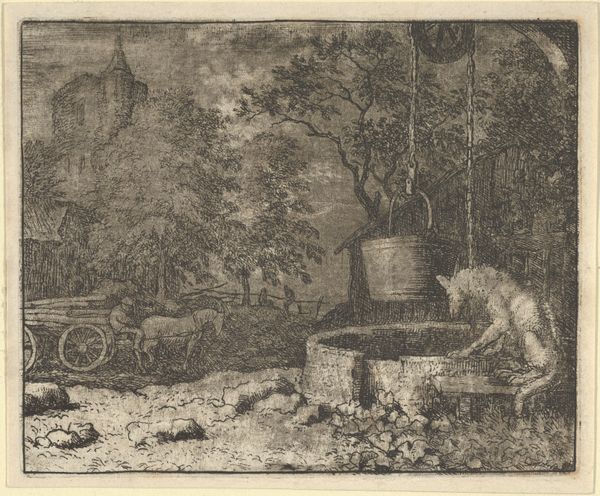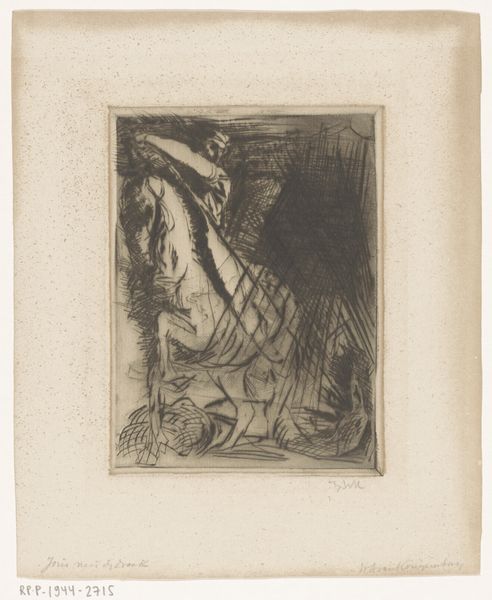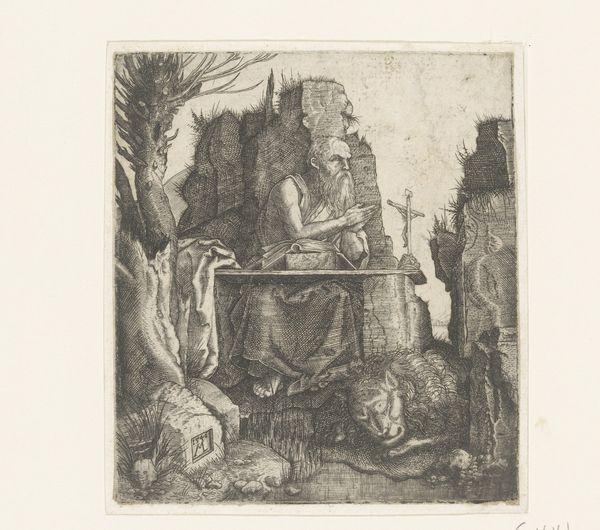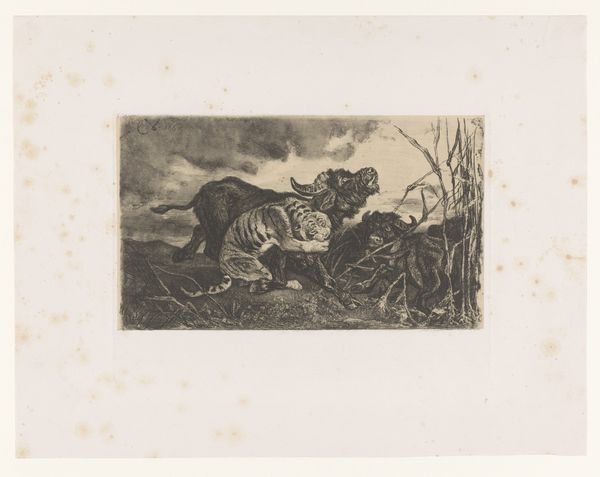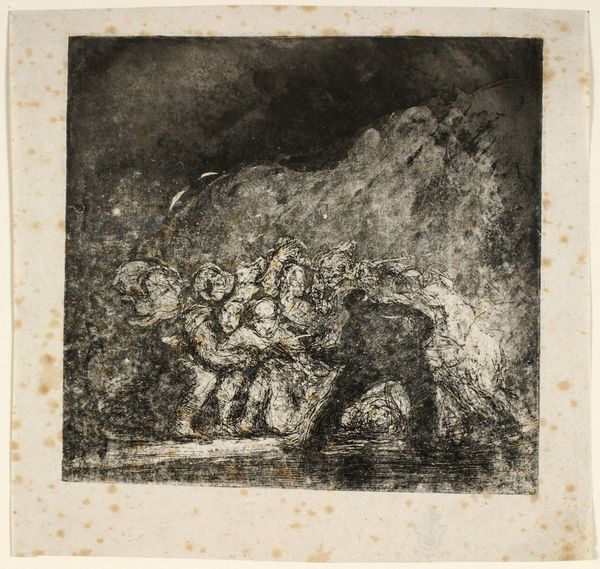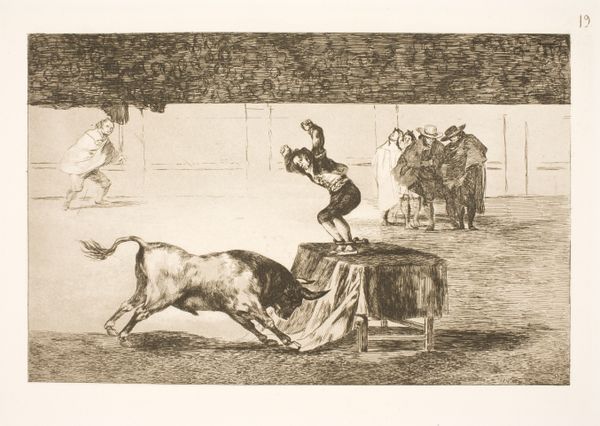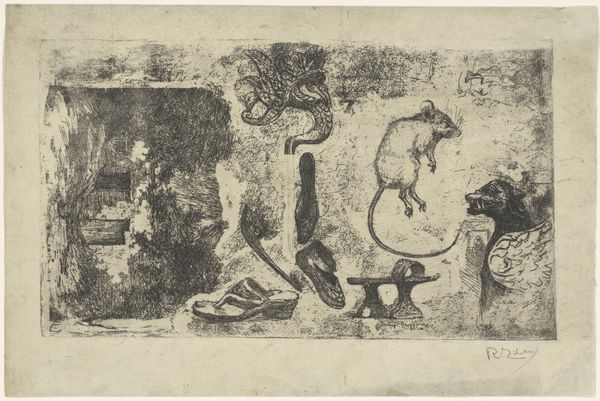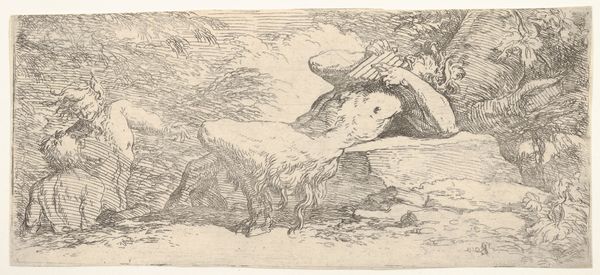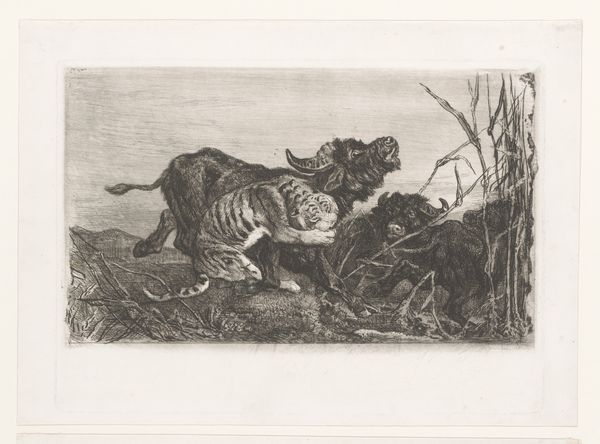
Copyright: Public Domain
Editor: This is "Schreitender Stier auf hohem Sockel," or "Striding Bull on a High Base," created by Fritz Boehle sometime between 1904 and 1910, using ink, charcoal, and watercolor on paper. There’s a monumental, almost heroic feel to this sketch despite the limited color palette. What historical perspectives can you offer on this depiction? Curator: This image resonates deeply with the societal fascination of the early 20th century with power, strength, and perhaps even a sense of national pride. Think about the political climate – rising nationalism was evident across Europe. The choice of a bull, traditionally a symbol of virility and strength, placed on a prominent pedestal, would likely evoke associations of dominance. But it’s important to ask: who commissions and displays such images? Boehle was working at a time when public art played a key role in shaping civic identity and communicating specific ideologies. Editor: So the artwork isn't just about a bull, but about conveying a specific message to the public? Curator: Precisely. Consider the museum context too; exhibiting this image at the Städel reflects an institutional decision to validate certain historical narratives. Who is the public intended to engage with such symbolism, and what power dynamics are at play when institutions place such images on view? Editor: That shifts my perception entirely! It's not just a drawing; it's a statement reflecting the era's values, and the museum's ongoing dialogue with those values. Curator: Indeed. Examining it through a historical lens reveals how the visual arts were actively participating in the political discourse. I find that utterly fascinating! Editor: I completely agree. It gives me so much to think about when viewing other works, too.
Comments
No comments
Be the first to comment and join the conversation on the ultimate creative platform.
